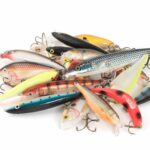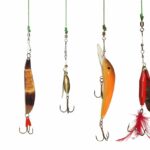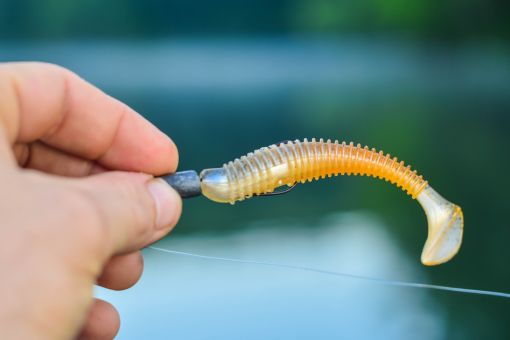
Fishing is among the world’s oldest and most popular past times and sports. Yearly, millions of people participate in competitions, but more casual anglers do it for fun. While there are numerous fishing strategies and approaches, one of the most crucial factors of the activity is choosing the correct bait. The question we are tackling today is if fish have learned to avoid baits?
Fish are intelligent creatures, and they can learn to recognize and avoid certain types of bait. There is so much technology today to track, trace and see underwater how fish act around bait, but still, it is somewhat unanswered. Many trials and tests have been done on this with varied results.
Baits are used to draw fish to your hook and come in various shapes and flavors. This article will focus on the fundamental ideas and best practices behind bait fishing, including lures, hooks, bait, and lines. We will also explore whether fish learn to avoid bait, and we will use practical examples and real-world applications to demonstrate the topics covered.
Do Fish Learn To Avoid Bait
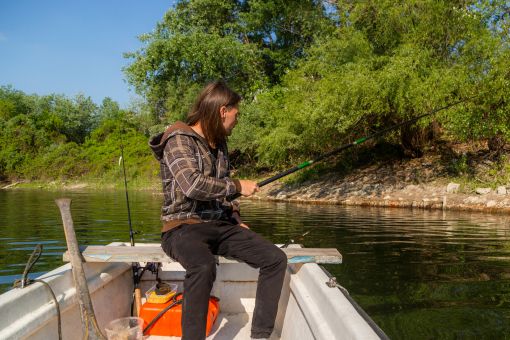
This is the question many fishermen and anglers contemplated over the years. If you go into any bait and tackle shop, no one-size-fits-all solution to catching fish exists. Anglers pride themselves on innovative ways to outsmart fish. You don’t have to search very far to find someone saying they have a specific fishing spot. If that is true, then fish should be unable to detect or learn to avoid the bait.
If you ask the same person if that spot was always their favorite or if they had a favorite before that one, they will undoubtedly say this is the new favorite. Why is that? Are all the fish in that previous spot now gone? Did they learn not to take the bait anymore? Or did they learn to avoid that spot because of human presence? All of these questions and more needs exploring to answer.
How Do Fish Detect Bait?
The first aspect we need to answer is how fish detect bait? There are basically 5 ways a fish can find food. Smell, sight, taste, sound, and vibration. Depending on the fish species, specific fish rely heavily on smell. Fish like sharks, rays, eels, and salmon, to name only a few. These species can detect minute chemical changes in the water. You only need to watch a classic Jaws movie to understand this.
An “olfactory rosette,” or nasal organ, is found in most fish species. As the size of the olfactory rosette develops, the fish becomes more sensitive to chemical changes in the water. When did you last bring a greenhorn to see them become seasick? Did you notice how that attracted the fish?
There are thousands of dips and smell-inducing flavorings used in baits. The same is true about fish that rely on sight where they see the bait. Think of all the multitude of colored lures that flash and shines and bob and weave. They are there to attract the fish through sight. Then some baits create sounds to attract fish. Creating some distress-like sound or movement attracts predatory fish to have a look.
As a child going fishing with my dad and grandfather, they continually rebuked us. They said we should be quiet since we were scaring away the fish. Later in my life, when I go out on a boat, I hear other people far away speak. Water really causes the sound to travel. So it might be you and not the bait fish are trying to avoid.
Most fish and certain aquatic animals have a sensory system called the lateral line. These lines run from the front of its head to its tail on both sides of the fish. These canals contain neuromasts, specialized sensory cells that detect changes in water pressure and movement. The lateral line system is critical to a fish’s ability to traverse its environment, identify prey, and avoid predators.
It enables the fish to detect vibrations and changes in water pressure induced by adjacent objects and movements. This is why you can target specific fish species with tried and tested bait, methods, and tactics. But that does not guarantee you will catch anything, right? Many fish will investigate, prod, feel, taste, and then spit out bait that feels or tastes unnatural.
Now that we have some idea of how fish are attracted to the bait, we need to tackle the following question.
Does Fish Detect Human Scent On The Bait
I read an article a while ago about someone going deer hunting and the lengths they go through to hide their smell. That made me wonder if we, as fishermen and anglers go through the same thought process? I don’t think the average person does. Still, if you go into more professional competitions, you will see how vigorously they try to hide their scent.
I think most fish has adapted to the ability to avoid predators. Those who didn’t aren’t there to tell the others to avoid that danger. Most fish will be skittish if they detect the wrong smell or taste something unnatural. If your bait, lure, line, boots, or anything coming in contact with your scent seems off, that will cause fish not to take the bait.
Next time before going fishing, consider the traces of human-produced scents, like gasoline, when you fill up before going fishing or rub sunblock and insect repellent on your face and neck. Again this is debatable since scents will attract curious fish, and some go to extreme lengths to create weird concoctions for their fish bait.
Attracting them is one part, but getting them to take the bait is another. In the same way, you would not eat something that smelled or tasted off. Likewise, a cautious fish will not eat something with the wrong smell or taste.
So, did fish learn to avoid your bait? Maybe not. Maybe your scent is just too strong.
Impact Of Catch And Release On Bait Avoidance
Catching and releasing a fish may affect how it behaves around bait or in a specific area. Still, the extent of this impact depends on various factors, including the species of fish, the fishing method used, and the frequency of catch-and-release.
When caught and released, a fish can suffer from stress and physical trauma, which can immediately impact its behavior. A fish, for example, may become more cautious around bait or avoid the area where it was caught for an extended period. However, studies have shown that fish recover relatively quickly from catch-and-release stress, and their behavior returns to normal within a few hours to a few days.
The impact of catch-and-release on surrounding fish populations is unknown and likely depends on various factors, including population size, fishing pressure, and ecological context. However, some studies suggest that catch-and-release fishing can potentially reduce overall fish population density, whereas others find little or no effect.
In this study from Illinois Natural History Survey (INHS), they found that species like bass can learn to avoid baits over time. However, the same study also concluded that fish that saw others being caught did not learn to avoid the bait.
How Does Catch And Release Impact Salt And Fresh Water Fish
Because of differences in the stress response and physiological characteristics of fish from these two environments, catch and release can affect freshwater and saltwater fish differently.
Freshwater fish, particularly those in cooler water, may be more sensitive to handling and stress release than saltwater fish. This is due to their lower tolerance for handling and tendency to become more stressed quickly. Furthermore, freshwater fish have thinner skin and more delicate gill structures, making them more vulnerable to injury during handling.
Saltwater fish have adapted to a broader range of environmental conditions and are more resistant to handling and releasing stress. However, saltwater fish, such as billfish and sharks, may be more vulnerable to injury or death due to the physical stress of being caught and released.
Catch and release can affect fish behavior and survival in fresh and saltwater environments. For example, fish may become wary of anglers or avoid certain areas due to repeated catch and release, affecting their feeding, mating, and migration patterns. Furthermore, injured or stressed fish may be more vulnerable to predation or disease, potentially domino affecting the surrounding ecosystem.
From this, we can deduce that fish might learn to avoid humans, which might seem like they avoid bait or lures. This is more prevalent in larger ponds or lakes where the fish can migrate to other areas.
How Fish Behave Around Different Baits And Lures
Fish can react differently depending on live, artificial baits and lures. In addition, their behavior can vary depending on the fish species and other factors such as water temperature and current. Saltwater and freshwater fish can also behave in different ways when encountering different baits and lures. This is why you will see anglers change up their baits and lures accordingly.
Some saltwater fish, such as tuna, marlin, and swordfish, prefer live bait, such as squid, mackerel, and anchovies. Therefore, live bait rigs or slow trolling techniques frequently catch these fish. Freshwater fish such as bass and catfish, on the other hand, may prefer live bait such as worms, minnows, and crayfish.
Live bait will always be effective since this is what fish will target. As long as there is no weird smell, sound, or texture. Furthermore, the types of artificial baits and lures that work in saltwater versus freshwater may differ. For example, freshwater lures may resemble insects, worms, or small prey fish. In contrast, saltwater lures are frequently designed to mimic the movements and appearance of small fish or crustaceans.
Although artificial baits look and may react the same as live bait, they will only cause impulsive fish to strike. The cautious ones will poke and prod the lure before biting the fake meal; most of the time, they won’t.
Live baits: Many fish prefer live baits because they are a natural food source that fish are accustomed to eating. Because live bait smells and looks like something fish would eat in the wild, it may entice them to approach and take it. However, using live bait necessitates careful handling and storage to keep the bait healthy and active.
Artificial baits: When used correctly, artificial baits such as soft plastic worms, grubs, and spinnerbaits can effectively attract fish. These baits can imitate the appearance and movement of live bait while being more durable and easier to handle. However, because artificial baits do not smell or taste like natural prey, some fish may be less likely to take them.
Lures: Lures are often used to target specific species of fish because they are designed to mimic the movements and appearance of prey. For example, a lure shaped like a small fish could catch bass or trout. Lures can be made from various materials, such as metal, plastic, and feathers. They can be used with different techniques, such as jigging or trolling. Lures can be effective at attracting fish because they can be used to imitate the movements and behavior of natural prey.
To determine which types of baits and lures are most effective, research the species of fish you want to catch and the body of water you’re fishing in. Experienced anglers frequently experiment with various baits and techniques to determine what works best. Sometimes having backup baits or lures to swap to can be beneficial if the fish are not biting a specific bait or lure.
Do Genes And Activeness Play A Role In Avoidance
A study conducted in 1970 wanted to see if largemouth bass (LMB) could learn to avoid hooks if caught and released repeatedly for an extended time. However, throughout the study, they found that some fish were more eager than others, with some caught up to 15 times. This indicated that the fish caught either did not learn from past experiences or did not care enough to stop taking the bait.
After that test, they separated the active fish from the lazy ones and bred them with their group. They then conducted the same test with the offspring and found the results were the same for the respective groups. The less eager fish had a slower metabolic rate than the other group of fish, and this trait was passed down to the offspring.
Taking this into consideration when talking about whether fish can learn to avoid bait makes it hard to know for sure. However, from experience and studies like the one on LMB, we can conclude that fish in a specific area can learn to avoid particular bait. Our human habits and behavior do affect fish behavior. That is why anglers learned to adapt and switch up their techniques.
The possibility that all the active fish have been caught in an area leaving only the lazy fish, should also be considered. This is especially true if there is no catch-and-release system in place. The study pointed out certain fish that will continually be caught where others will never be. However, that does not mean that fish can not learn from past experiences and act accordingly.
How Bright Are Fish, And Can They Remember
In a study by Culum Brown from Macquarie University, he wanted to see if fish can remember escape routes in their environment and learn to avoid specific threats. He found that when fish were unfamiliar with the tank, they were caught more frequently but quickly learned and remembered a particular escape route. However, fish familiar with the tank learned far quicker how to avoid the threat and promptly escaped.
From this study and others like it, we can conclude that fish are intelligent and can remember specific environments and situations. However, we should also understand that prey fish will be more prone to avoid baits and lures. In contrast, predatory fish will instinctively attack a bait.
“Rainbow trout CPUE declined with high angler effort, despite not harvesting any fish, suggesting some level of learned behavior in avoiding hooks (Askey et al. 2006).”
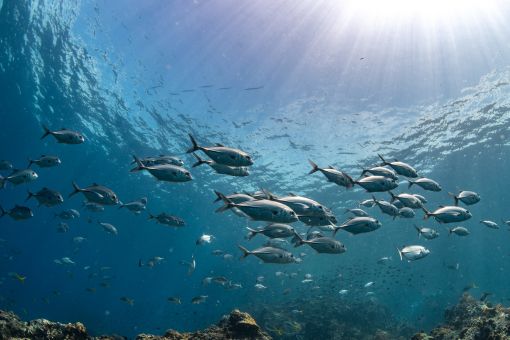
Another factor to consider is fish population density. For example, suppose there is a lot of fish fighting for food. In that case, the likelihood of them taking the bait without proper examination is somewhat of a survival instinct to get the food before the others do. But, again, the behavior of freshwater vs. saltwater species plays an integral role in these survival tactics.
A bigger fish in the ocean always wants their food or them as food.
Conclusion
So the question remains somewhat open-ended since the evidence suggests that fish can remember and learn to avoid the bait. However, still, fish are caught in the thousands daily. Human ingenuity and solution-orientated thinking help us stay ahead of our targeted prey. Many wise fishermen and anglers will say, change your bait or move if they don’t bite, or try again tomorrow.
- Do You Need An Indicator For Nymph Fishing? - November 16, 2023
- Fishing Safety Tips For Families - September 25, 2023
- What Is The Best Time To Night Fish At A Lake? - September 18, 2023





